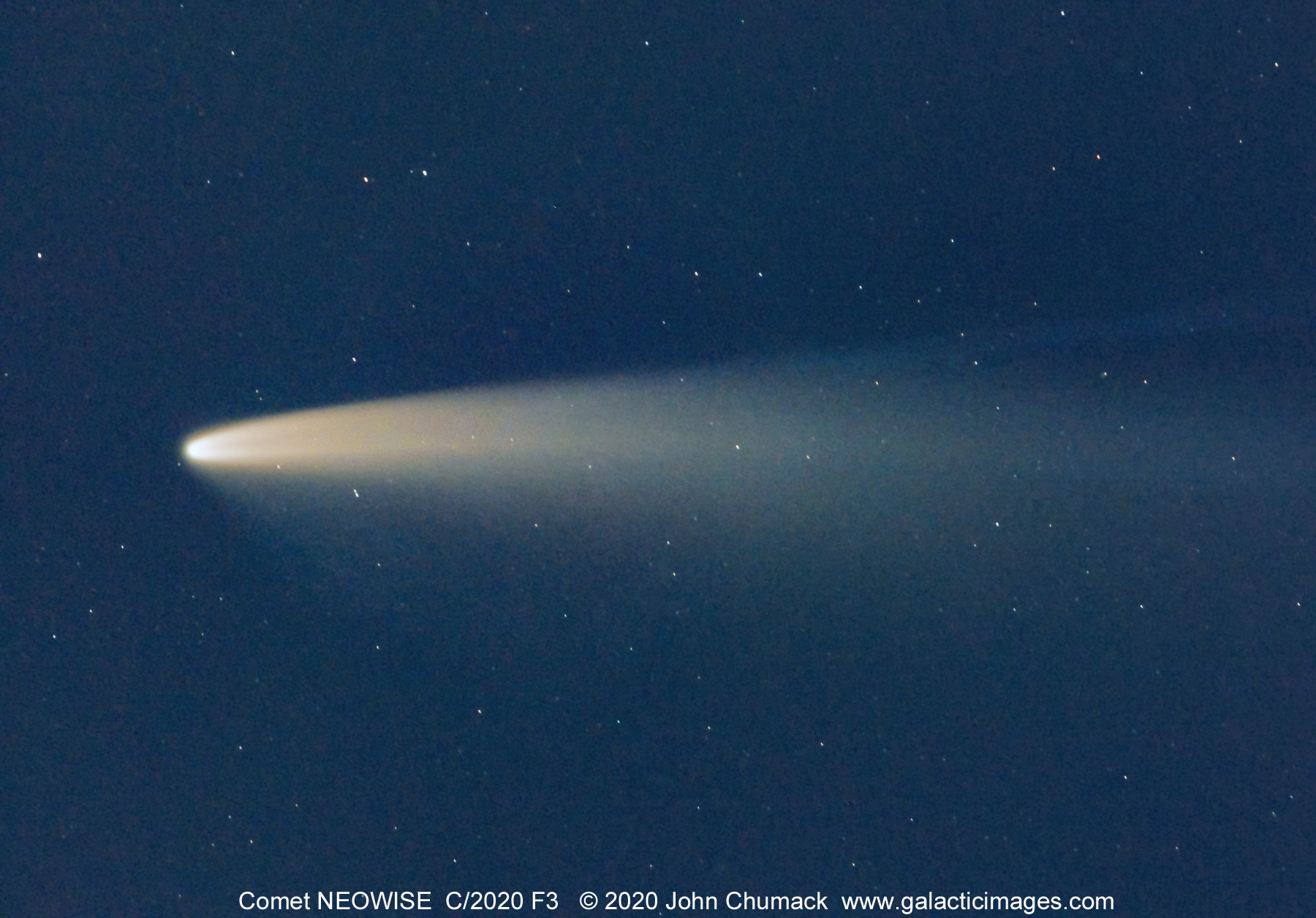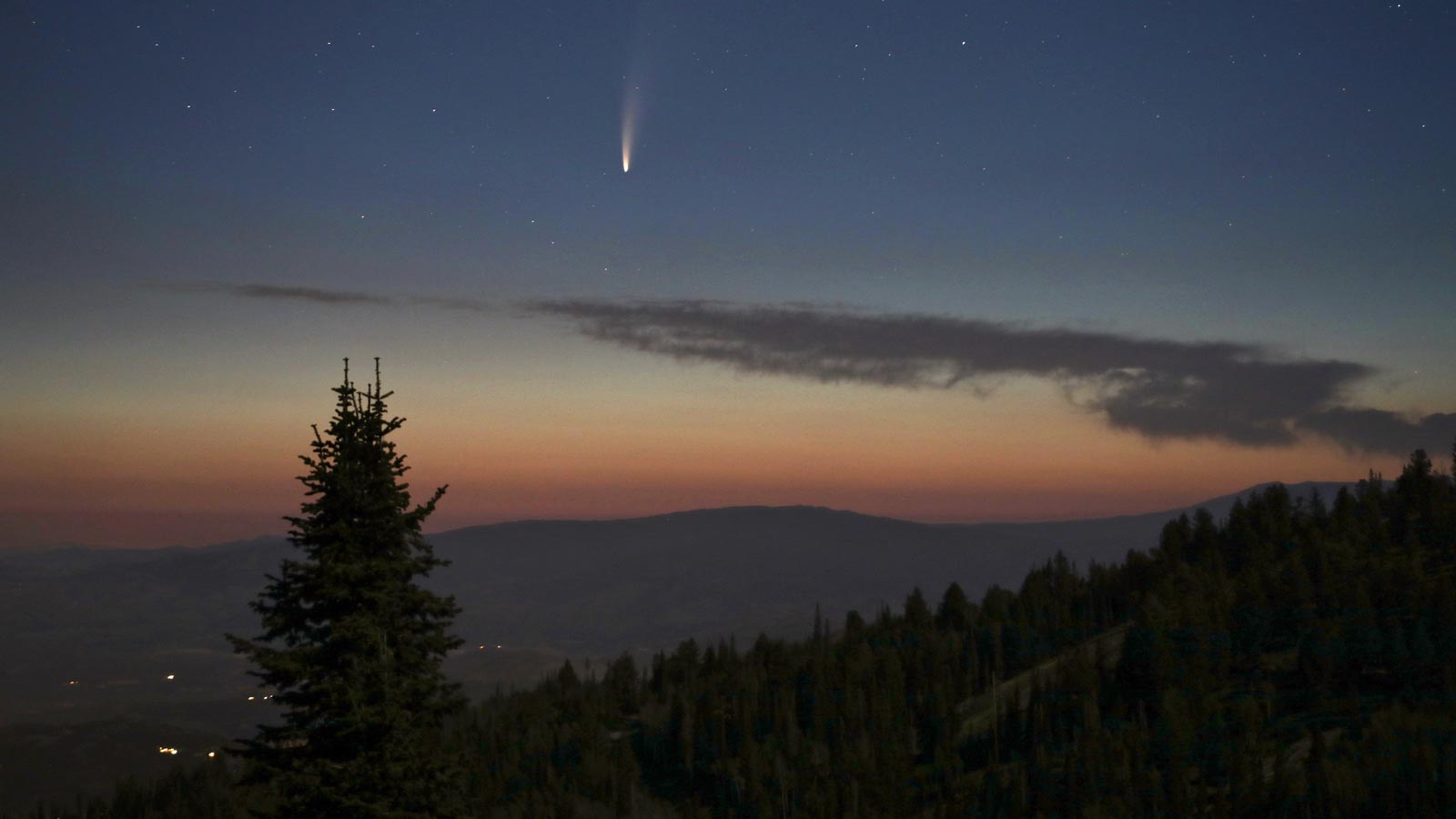

There is still a risk that it will fracture as it slingshots away from the Sun’s heat. Recorded on the night of July 13/14, the composite of untracked foreground and tracked and filtered sky exposures teases out details in the comets tail not visible.

Its long tails stretch across this deep skyview from Suchy Vrch, Czech Republic. In fact, NEOWISE has already survived its closest encounter with our Sun, on 3 July 2020. Explanation: This Comet NEOWISE (C/2020 F3) now sweeps through our fair planets northern skies. The comet’s spectacular bright tail is caused by heat from the Sun, which is evaporating the outer layers of the icy comet. It will reach its closest point to Earth on 23 July, at a distance of just over 100 million km. It is expected to dim as the month goes on, but to remain visible to the naked eye throughout July. Skywatchers in the Northern Hemisphere with clear skies have a chance to catch a glimpse of Comet C/2020 F3 (NEOWISE). Comet NEOWISE or C/2020 F3 is seen in the sky, above the Seven Magic Mountains art installation by artist Ugo Rondinone, in Jean, Nevada on July 15, 2020. Officially called C/2020 F3, NEOWISE was first discovered by the NASA NEOWISE space mission in March this year. The NEOWISE comet is one of 3,650 that have been confirmed by NASA.

This rare treat was also accompanied by another night-time phenomena: the very unusual noctilucent clouds - shiny, icy clouds that look remarkably like water ripples in the night sky. A comet from the outer reaches of the Solar System, nicknamed NEOWISE, was photographed by two ESO staff members - who are also keen astrophotographers - on 8 July 2020 in the skies over the ESO Supernova and ESO Headquarters in Garching, Germany.


 0 kommentar(er)
0 kommentar(er)
